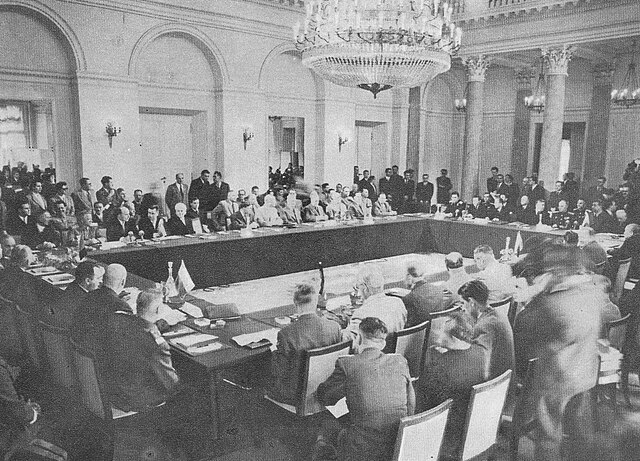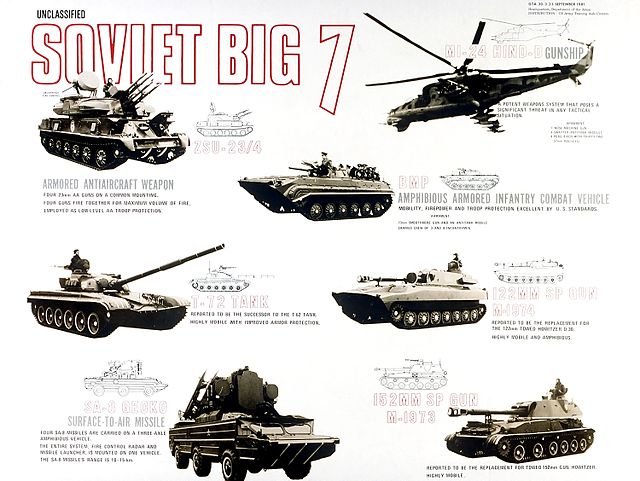The Warsaw Pact (WP), formally the Treaty of Friendship, Cooperation and Mutual Assistance (TFCMA), was a collective defense treaty signed in Warsaw, Poland, between the Soviet Union and seven other Eastern Bloc socialist republics of Central and Eastern Europe in May 1955, during the Cold War. The term "Warsaw Pact" commonly refers to both the treaty itself and its resultant defensive alliance, the Warsaw Treaty Organization (WTO). The Warsaw Pact was the military and economic complement to the Council for Mutual Economic Assistance (Comecon), the regional economic organization for the Eastern Bloc states of Central and Eastern Europe.
The Presidential Palace in Warsaw, Poland, where the Warsaw Pact was established and signed on 14 May 1955.
Conference during which the Pact was established and signed.
A 1981 "Soviet Big Seven" threats poster, displaying the equipment of the militaries of the Warsaw Pact
A typical Soviet military jeep UAZ-469, used by most countries of the Warsaw Pact
The Polish People's Republic was a country in Central Europe that existed from 1947 to 1989 as the predecessor of the modern-day Republic of Poland. From 1947 to 1952 it was known as the Republic of Poland, and it was also often simply known as Poland. With a population of approximately 37.9 million near the end of its existence, it was the second most-populous communist and Eastern Bloc country in Europe. A unitary state with a Marxist–Leninist government, it was also one of the main signatories of the Warsaw Pact alliance. The largest city and official capital since 1947 was Warsaw, followed by the industrial city of Łódź and cultural city of Kraków. The country was bordered by the Baltic Sea to the north, the Soviet Union to the east, Czechoslovakia to the south, and East Germany to the west.

Poland's fate was heavily discussed at the Yalta Conference in February 1945. Joseph Stalin, whose Red Army occupied the entire country, presented several alternatives which granted Poland industrialized territories in the west whilst the Red Army simultaneously permanently annexed Polish territories in the east, resulting in Poland losing over 20% of its pre-war borders. Stalin then imposed upon Poland a puppet communist government following the war, forcibly bringing the nation into the
A propaganda poster enhancing to vote for Communist policies in the "Three Times Yes" 1946 referendum
Draft of Constitution of the Polish People's Republic (Russian version) with Stalin's remarks, 1952
The 1970 Polish protests were put down by the communist authorities and Milicja Obywatelska. The riots resulted in the deaths of 42 people and over 1,000 injured.








